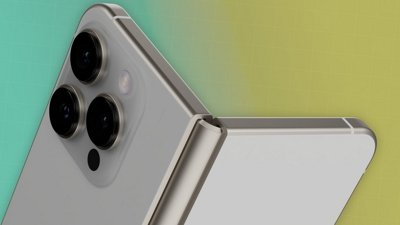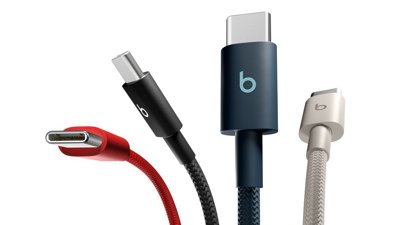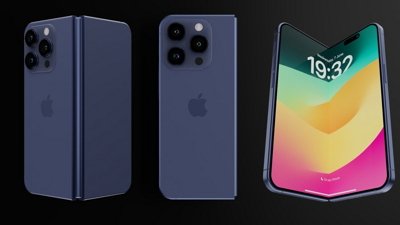A developer on Wednesday revealed that the Fusion Drive support built into OS X Mountain Lion is compatible with a makeshift hybrid storage device, proving the technology can be used with Macs which didn't come preconfigured to take advantage of the feature.
In a post to Tumblr, developer Patrick Stein unofficially confirmed that Mountain Lion provides Fusion Drive support for current Macs, as he was able to "build" a hybrid drive compatible with Apple's new storage technology.
When Apple announced its new Fusion Drive hybrid storage solution alongside the redesigned iMac earlier this month, it noted that OS X Mountain Lion would be able to operate the system without the need to update. This prompted some to question whether existing hybrid drives would work with current Macs not configured with Apple SSD and HDD combination, as the statement suggested support for the technology was already embedded in the operating system's code.
Using the Terminal version of disk utility, Stein was able to setup a solid state drive and a separate hard drive so that OS X recognized both as a single logical volume, which is basically what Fusion Drive promises. Just as Apple's Fusion Drive configures an SSD and an HDD into a single volume, Stein used an SATA-connected 128GB SSD and USB-attached 750GB HDD in his working solution.
In order to build a single logical volume, the developer used Core Storage, the OS X feature that links two separate storage units into one volume group, to join the SDD and HDD. Next, Stein created a 466GB HFS+ volume, otherwise known as Mac OS Extended, to facilitate file creation and transfer.
"Now in DiskUtility the individual disks no longer show, but the Logical Volume (LV) shows as one disk," Stein said. "Part One is finished, we’ve created a single Volume consisting of a SSD and a HDD."
To test whether the jury-rigged setup was being operated as a Fusion Drive, Stein created a number of directories with files equating to 140GB of data by using the mkdir and mkfile commands. During the process, data was funneled to the SSD until the 120GB mark, at which point the remaining files were written to the HDD in directories 11 to 13.
Next, Stein used the dd command to force reads of the data located on the HDD, an activity that Fusion Drive uses to determine which files are heavily accessed and should thus be relocated to the faster SSD. After stopping the read process, Stein used iostat to monitor whether any files were transferred to the SSD.
Immediately following the dd process, the system began dumping data from the SSD to the HDD, stopping after about 14GB of copying. Stein then attempted to readout data from directories 11 to 13, and at first found they were still located on the HDD. However, after about an hour of reads the files were being accessed from the SSD, meaning Fusion Drive had transferred the data successfully.
confirming that Fusion Drive is active.
While the informal test does prove that Fusion Drive is active and usable on older Macs, the process of configuring the hybrid storage devices is definitely not plug-and-play. It remains to be seen if Apple will offer Mac owners an easy way to configure their own components without having to run Terminal and command line code.
 Mikey Campbell
Mikey Campbell







-m.jpg)






 Marko Zivkovic
Marko Zivkovic
 Amber Neely
Amber Neely
 Malcolm Owen
Malcolm Owen


 Christine McKee
Christine McKee




-m.jpg)






37 Comments
Very cool. I've got a similar setup in my MBP having replaced its optical drive with a SSD. The difference is that I decide which files go where and I have symlinks set up to support this (so that, for example, my Windows 7 VM virtual drive lives on the SSD while my other, less frequently used VMs live on the HDD along with my other documents and media files). I wonder if there's a way to force particular files to 'stick' to a particular physical drive with this setup. With my Mac OS X install and my (heavily-used Windows 7 VM), my computer boots in a matter of seconds, as does my VM, and my frequently-used Mac applications launch with nary a bounce in the dock. I *love* it!
[quote name="AppleInsider" url="/t/153951/os-x-mountain-lion-confirmed-to-support-fusion-drive-on-legacy-macs#post_2224201"] While Apple's Fusion Drive hardware is a hybrid drive with SSD and HDD bundled in one package, Stein used an SATA-connected 128GB SSD and USB-attached 750GB HDD in his working solution.[/quote] That is incorrect. It's not a hybrid drive it's two discreet drives, one an SSD and one a HDD being made into one virtual drive by the OS.
Very cool. I've got a similar setup in my MBP having replaced its optical drive with a SSD. The difference is that I decide which files go where and I have symlinks set up to support this (so that, for example, my Windows 7 VM virtual drive lives on the SSD while my other, less frequently used VMs live on the HDD along with my other documents and media files).
I wonder if there's a way to force particular files to 'stick' to a particular physical drive with this setup. With my Mac OS X install and my (heavily-used Windows 7 VM), my computer boots in a matter of seconds, as does my VM, and my frequently-used Mac applications launch with nary a bounce in the dock. I *love* it!
I was thinking about doing this myself. Do you have the SSD plugged into the HDD port, and the HDD plugged into the Optical port, the other way around, or does it make a difference? I've only recently considered doing this so I don't know much about the pros and cons of different configurations.
Apple's new feature is NOT a Hybrid drive. It is NOT special Hardware at all. It combines a stand-alone SSD with a stand-alone SATA Hard Drive using a feature previously only available on mainframe-class computers known as Hierarchical Storage Management. This Tiered Storage moves entire Files (not just blocks) back and forth from faster to slower storage as their frequency of use changes. This gives overall drive performance that is much closer to that of the faster of the two drives.
[quote name="myopicman" url="/t/153951/os-x-mountain-lion-confirmed-to-support-fusion-drive-on-legacy-macs#post_2224230"]Apple's new feature is NOT a Hybrid drive. It is NOT special Hardware at all. It combines a stand-alone SSD with a stand-alone SATA Hard Drive using a feature previously only available on mainframe-class computers known as Hierarchical Storage Management. This Tiered Storage moves entire Files (not just blocks) back and forth from faster to slower storage as their frequency of use changes. This gives overall drive performance that is much closer to that of the faster of the two drives. [/quote] Nope. The independent testing showed it works at the block level.